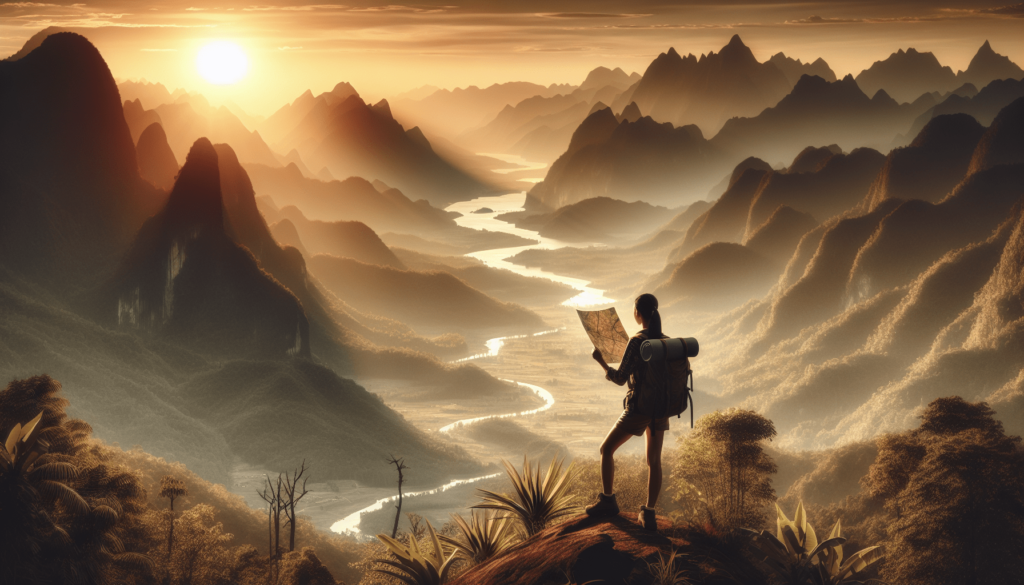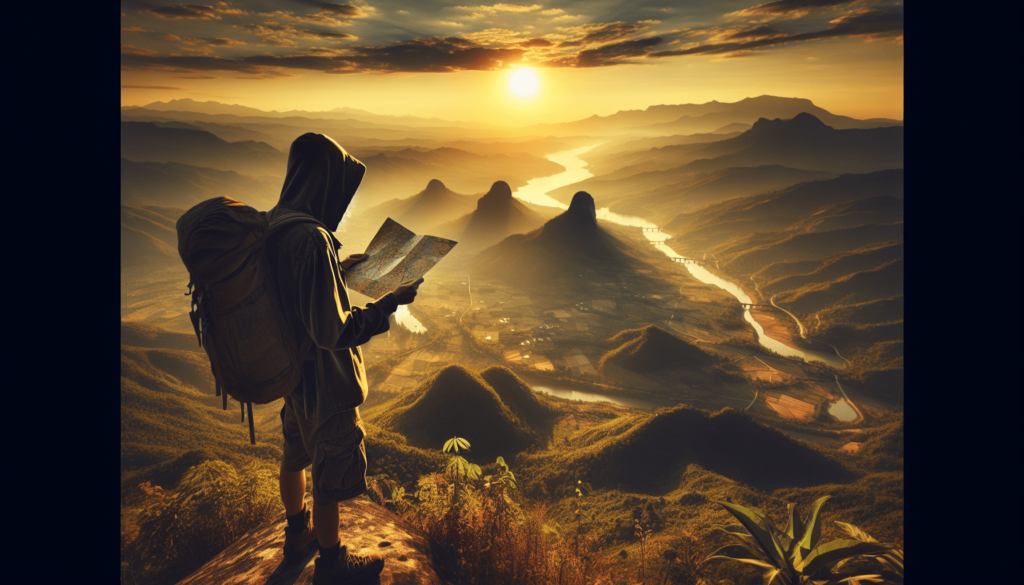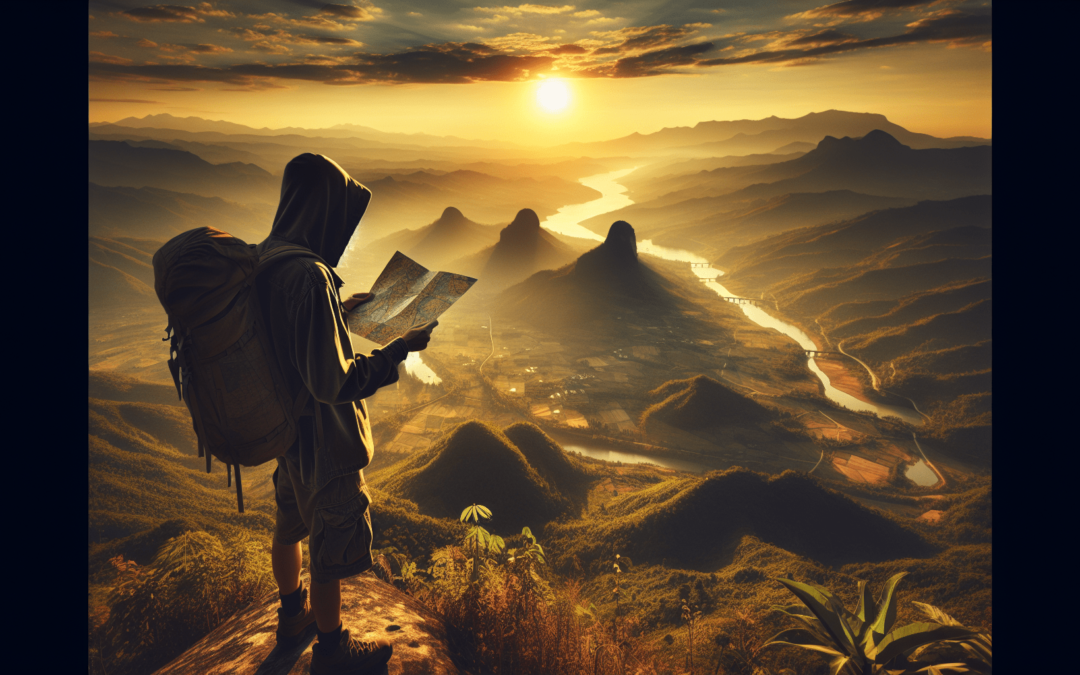Navigating using natural landmarks can feel like reconnecting with a simpler, more primal way of moving through the world. You’ll learn how to recognize trees, rivers, mountains, and even the stars as your guides, turning any outdoor adventure into a journey of discovery. Imagine being able to chart your course without relying on technology, just using the world around you as your map. This guide will help you sharpen your observation skills, deepen your understanding of the landscape, and navigate confidently, trusting your connection with nature itself. Have you ever found yourself lost in the wilderness, with no map, GPS, or cell signal to guide you? Knowing how to navigate using natural landmarks can be not just a fun skill, but a life-saving one as well. Understanding these techniques can connect you more deeply with your surroundings and provide peace of mind on any outdoor adventure.

Understanding Natural Navigation
To start, one of the most critical steps is understanding what natural navigation entails. Unlike using a compass or a map, natural navigation requires keen observation and interpretation of the environment around you. This isn’t about memorizing a bunch of tips; it’s about developing a new way of seeing the world.
The Importance of Natural Landmarks
Natural landmarks are features in the landscape that are easily recognizable and comparatively unchanging. These can include anything from mountain ranges, rivers, and canyons to specific types of trees or rock formations. Your ability to recognize and utilize these landmarks makes natural navigation possible.
Pros and Cons
While using natural landmarks has its advantages, it also has its limitations. Here’s a quick rundown to help you weigh the pros and cons:
| Pros | Cons |
|---|---|
| No need for technical gadgets | Some landmarks are seasonal |
| Enhances observational skills | Not useful in featureless areas |
| Greater connection with nature | Requires practice and experience |
| Reliable (doesn’t run out of batteries) | Can be hard to master initially |
Types of Natural Landmarks
Identifying and understanding different types of natural landmarks can make your navigation more reliable. Let’s dive into some of the most commonly used natural landmarks.
Mountains and Hills
Mountains and hills are often visible from great distances and can serve as excellent reference points. When you’re near a mountain range, note the relative position of each peak. You can use a mnemonic device to remember their order if you need to.
Rivers and Streams
Waterways are usually easy to follow and can lead you to civilization or help you navigate vast areas. Note the flow direction of a river or stream; this can be especially helpful in a forest or open plain.
Unique Trees and Vegetation
Certain trees, such as giant redwoods or unique formations of foliage, can act as useful markers. Just make sure they are distinctive enough to be remembered and recognized easily.
Rock Formations
Rock formations, especially those with unique shapes or sizes, can also serve as natural guides. A large boulder or a series of peculiar rock stacks can be excellent navigation aids.
Intersection of Paths
Animal paths and trails can sometimes lead you to water sources or human habitation. Keep an eye out for well-worn paths and use them to guide your journey.
Practical Techniques
Now that you know the kinds of landmarks to look for, let’s explore some practical techniques for using these natural features.
The Shadow Stick
One of the simplest ways to determine direction is using a shadow stick. Place a stick upright in the ground and mark the tip of its shadow with a small object or a scratch in the dirt. Wait 10-15 minutes and note the new position of the shadow tip. Draw a line between the two marks; this line will roughly run east-west, with the first mark being the west end.
Using the Stars
If you’re out at night, the stars can be incredibly useful. In the northern hemisphere, locate the North Star (Polaris), which is almost directly above the North Pole. In the southern hemisphere, you can use the Southern Cross constellation to find south.
Reading Tree Growth
Trees can also offer direction. In most climates, moss tends to grow on the north side of trees. Sun exposure can cause thicker growth rings on the southern side, making the tree slightly asymmetrical.
Tracking Sun and Moon
The sun rises in the east and sets in the west. This can help you orient yourself during daylight hours. Similarly, understanding the moon’s phases and its path can provide navigation clues at night.
Challenges to Consider
While navigating naturally is a valuable skill, several challenges exist that you’ll need to consider.
Weather Conditions
Snow or heavy fog can make it difficult to see distant landmarks. In such conditions, focus on more immediate features like unique trees or small hills.
Seasonal Changes
Some natural landmarks can change with seasons. A river might dry up or become significantly larger, and foliage can change dramatically. Be aware of these potential changes and have alternative landmarks in mind.
Human Influence
Human constructions, such as roads or buildings, can suffer from a lack of maintenance and become unreliable over time. While they can be useful, don’t solely rely on them.

Developing Your Skills
Practical experience is key to becoming proficient in natural navigation.
Start Small
Begin in a controlled environment, like a local park or a well-known trail, to practice your skills. Gradually increase the complexity of your environment as you build confidence.
Practice Regularly
Like any skill, regular practice is essential. Make it a habit to notice natural landmarks and try to navigate without electronic aids whenever possible.
Record Your Experiences
Keep a journal of your experiences, noting what worked well and what didn’t. Over time, you’ll refine your techniques and become more adept at reading the natural world.
Safety Tips
Natural navigation is an incredibly useful skill, but it’s important to keep safety in mind.
Always Have a Backup
Even the best navigator can get lost. Always carry a map, compass, or charged GPS device as a backup.
Inform Someone
Before heading out, let someone know your plans and expected return time. This ensures someone will look for you if you don’t return as planned.
Stay Hydrated and Prepared
Always carry enough water, food, and appropriate clothing. Your physical well-being is crucial when navigating natural terrains.
With these guidelines, you’ll be well on your way to mastering the art of navigating using natural landmarks. This skill not only connects you deeply with the environment but also equips you with the confidence to explore the wilderness safely. Happy navigating!

